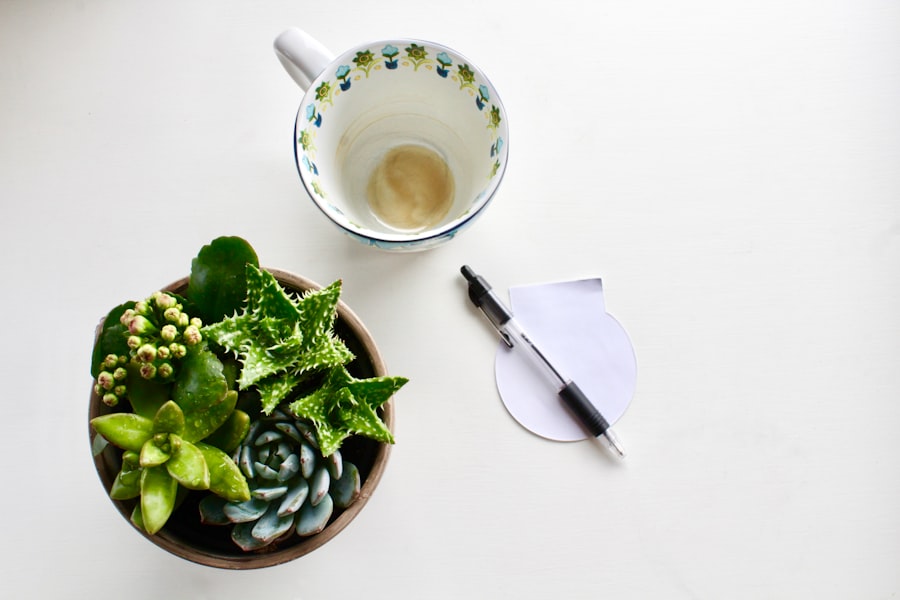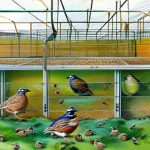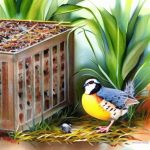Quail battery breeding pens are a popular method for raising quail for meat and egg production. These pens are designed to maximize space and efficiency, allowing for a large number of quail to be raised in a relatively small area. The pens are typically made of wire mesh or other durable materials, with multiple levels or compartments to house the quail. This setup allows for easy access to the birds for feeding, watering, and monitoring, while also providing a clean and controlled environment for breeding and egg collection.
Quail battery breeding pens are ideal for small-scale or backyard quail farmers who want to maximize their production in a limited space. They are also commonly used by commercial quail producers who need to raise a large number of birds in a cost-effective and efficient manner. By using battery breeding pens, farmers can take advantage of vertical space and easily manage their quail breeding operation. In this article, we will explore the process of setting up and managing a quail battery breeding pen, as well as the important considerations for choosing the right breeding stock, feeding and watering the quail, monitoring their health, and harvesting and processing the birds.
Table of Contents
- 1 Setting Up a Quail Battery Breeding Pen
- 2 Choosing the Right Quail Breeding Stock
- 3 Managing the Quail Battery Breeding Pen
- 4 Feeding and Watering the Quail in the Battery Breeding Pen
- 5 Monitoring the Health of Quail in the Battery Breeding Pen
- 6 Harvesting and Processing Quail from the Battery Breeding Pen
- 7 FAQs
- 7.1 What is a quail battery breeding pen?
- 7.2 How does a quail battery breeding pen work?
- 7.3 What are the benefits of using a quail battery breeding pen?
- 7.4 Are there any ethical concerns with using quail battery breeding pens?
- 7.5 What should be considered when setting up a quail battery breeding pen?
Key Takeaways
- Quail battery breeding pens are an efficient way to breed quail for meat and eggs.
- Setting up a quail battery breeding pen requires careful consideration of space, ventilation, and lighting.
- Choosing the right quail breeding stock is crucial for successful breeding and production.
- Managing the quail battery breeding pen involves regular cleaning, monitoring, and providing proper nutrition.
- Feeding and watering the quail in the battery breeding pen requires a balanced diet and access to clean water at all times.
- Monitoring the health of quail in the battery breeding pen is essential to prevent and address any potential issues.
- Harvesting and processing quail from the battery breeding pen should be done humanely and efficiently to maintain product quality.
Setting Up a Quail Battery Breeding Pen
When setting up a quail battery breeding pen, there are several key factors to consider. First, it’s important to choose a location that is well-drained and protected from predators and extreme weather conditions. The pen should be placed on level ground and ideally have access to natural sunlight for at least part of the day. The size of the pen will depend on the number of quail you plan to raise, but each bird should have at least 1 square foot of space to ensure they have room to move around and exhibit natural behaviors.
The construction of the pen is also crucial for the health and safety of the quail. The wire mesh should be strong enough to withstand the weight of the birds and protect them from predators, while also allowing for good ventilation and drainage. The pen should be divided into compartments or levels to separate males and females, as well as provide space for nesting boxes and egg collection. Additionally, the pen should be equipped with feeders and waterers that are easily accessible and can be refilled without entering the pen. By carefully planning and constructing the quail battery breeding pen, farmers can create a comfortable and efficient environment for their birds to thrive.
Choosing the Right Quail Breeding Stock
Selecting the right breeding stock is essential for a successful quail breeding operation. When choosing quail for breeding, it’s important to select birds that are healthy, productive, and well-suited to the specific goals of the farm. For meat production, farmers may prioritize fast growth rates and high feed conversion ratios, while for egg production, they may focus on high egg-laying capacity and fertility. Additionally, farmers should consider the temperament and behavior of the birds, as well as their ability to adapt to the local climate and environmental conditions.
It’s also important to consider genetic diversity when selecting breeding stock, as this can help prevent inbreeding and maintain overall health and productivity in the quail population. Farmers may choose to purchase breeding stock from reputable suppliers or breed their own birds from a diverse genetic pool. Regularly evaluating the performance of the breeding stock through measures such as egg production, hatch rates, and overall health can help farmers make informed decisions about which birds to keep for breeding purposes. By carefully selecting and managing the breeding stock, farmers can ensure that their quail battery breeding pen produces healthy and productive offspring.
Managing the Quail Battery Breeding Pen
Managing a quail battery breeding pen involves regular care and maintenance to ensure the health and productivity of the birds. This includes daily tasks such as feeding and watering the quail, collecting eggs, cleaning the pen, and monitoring the birds for signs of illness or injury. It’s important to establish a consistent routine for managing the pen, as this can help reduce stress on the birds and maintain a clean and healthy environment.
In addition to daily care, farmers should also periodically assess the condition of the pen and make any necessary repairs or improvements. This may include replacing worn wire mesh, repairing feeders and waterers, or adding additional nesting boxes or perches for the birds. Regularly inspecting the pen for signs of wear and tear can help prevent escapes or injuries among the quail, as well as ensure that the pen remains secure from predators.
Furthermore, managing a quail battery breeding pen involves keeping detailed records of the birds’ performance, including egg production, hatch rates, growth rates, and any health issues that arise. This information can help farmers make informed decisions about which birds to keep for breeding purposes and identify any areas for improvement in their management practices. By staying proactive and attentive to the needs of the quail battery breeding pen, farmers can create a thriving and sustainable operation.
Feeding and Watering the Quail in the Battery Breeding Pen
Feeding and watering are essential aspects of managing a quail battery breeding pen. Quail require a balanced diet to support their growth, reproduction, and overall health. A commercial quail feed that is specifically formulated for meat or egg production can provide the necessary nutrients for the birds, including protein, vitamins, minerals, and energy sources. Farmers should ensure that feeders are kept filled with fresh feed at all times and that any spilled feed is promptly cleaned up to prevent contamination or waste.
In addition to providing a balanced diet, it’s important to ensure that quail have access to clean water at all times. Waterers should be checked regularly to ensure they are functioning properly and refilled as needed. In colder climates, farmers may need to take extra precautions to prevent water from freezing in the winter months, such as using heated waterers or providing warm water multiple times per day.
Furthermore, farmers may choose to supplement the quail’s diet with additional sources of nutrition, such as greens, fruits, or mealworms. These treats can provide enrichment for the birds and help prevent boredom or stress in the pen. By carefully managing the feeding and watering of the quail in the battery breeding pen, farmers can ensure that their birds receive the nutrition they need to thrive and produce high-quality meat or eggs.
Monitoring the Health of Quail in the Battery Breeding Pen

Monitoring the health of quail in the battery breeding pen is crucial for preventing disease outbreaks and maintaining overall productivity. Farmers should regularly observe the behavior and appearance of their birds to identify any signs of illness or injury. Common indicators of poor health in quail include lethargy, decreased appetite, abnormal droppings, respiratory issues, or changes in feather condition.
In addition to visual observations, farmers may choose to implement regular health checks for their quail, including weighing individual birds, checking for parasites or external injuries, and monitoring egg production and hatch rates. By staying proactive in monitoring the health of their birds, farmers can quickly identify any issues that arise and take appropriate measures to address them.
It’s also important for farmers to establish a relationship with a veterinarian who is knowledgeable about quail health and can provide guidance on disease prevention and treatment options. Regular consultations with a veterinarian can help farmers stay informed about best practices for maintaining a healthy quail population in their battery breeding pen.
Furthermore, maintaining good biosecurity practices can help prevent disease transmission within the quail population. This may include limiting visitors to the farm, quarantining new birds before introducing them to the existing population, and regularly disinfecting equipment and facilities within the pen. By staying vigilant in monitoring the health of their quail population and implementing proactive measures for disease prevention, farmers can create a thriving and sustainable operation.
Harvesting and Processing Quail from the Battery Breeding Pen
Harvesting and processing quail from the battery breeding pen is an important step in maximizing the productivity of the operation. For meat production, farmers may choose to harvest quail at around 6-8 weeks of age when they reach market weight. The birds can be humanely euthanized using methods such as cervical dislocation or CO2 stunning before being processed for meat.
For egg production, farmers may collect eggs daily from nesting boxes within the pen. These eggs can be cleaned and stored appropriately before being sold or consumed. It’s important to handle eggs with care to prevent contamination or breakage during collection and processing.
In addition to harvesting meat and eggs, farmers should also consider culling unproductive or unhealthy birds from their breeding stock to maintain overall productivity in the pen. This may involve humanely euthanizing birds that are no longer laying eggs or are experiencing chronic health issues.
Furthermore, farmers should have a plan in place for processing meat from harvested quail, whether it’s for personal consumption or commercial sale. This may involve plucking feathers, eviscerating the birds, and packaging them appropriately for storage or distribution.
By carefully managing the harvesting and processing of quail from the battery breeding pen, farmers can maximize their production while maintaining high standards for animal welfare and food safety. This step is crucial for ensuring that the operation remains sustainable and profitable over time.
One important aspect of managing the harvesting and processing of quail is to ensure that the birds are handled humanely and in accordance with industry standards. This includes using proper equipment and techniques to minimize stress and injury to the birds during harvesting and processing. Additionally, maintaining a clean and sanitary processing facility is essential for ensuring food safety and preventing contamination. By prioritizing animal welfare and food safety in the harvesting and processing of quail, farmers can build a reputation for producing high-quality products, which can lead to increased demand and profitability for their operation.
Looking to expand your poultry operation beyond quail? Check out our article on A-Frame Chicken Coops for a practical and space-efficient housing solution for your chickens. Whether you’re a beginner or an experienced breeder, these coops offer a versatile and customizable option for keeping your chickens comfortable and secure.
FAQs
What is a quail battery breeding pen?
A quail battery breeding pen is a system used for breeding and raising quail in a controlled environment. It typically consists of multiple stacked cages or compartments that allow for efficient breeding and egg collection.
How does a quail battery breeding pen work?
In a quail battery breeding pen, male and female quail are housed in separate compartments to control breeding. The pens are designed to maximize space and efficiency, allowing for easy egg collection and monitoring of the birds.
What are the benefits of using a quail battery breeding pen?
Quail battery breeding pens are designed to maximize space and efficiency, making them ideal for commercial quail breeding operations. They allow for easy monitoring of the birds, efficient egg collection, and can help to maximize production in a limited space.
Are there any ethical concerns with using quail battery breeding pens?
There are ethical concerns associated with the use of battery breeding pens for quail, as they can restrict the movement and natural behaviors of the birds. It is important for breeders to ensure that the pens provide adequate space, enrichment, and care for the quail.
What should be considered when setting up a quail battery breeding pen?
When setting up a quail battery breeding pen, it is important to consider the space and housing needs of the quail, as well as the ventilation, lighting, and temperature control within the pens. Proper sanitation and hygiene practices are also crucial for maintaining the health of the birds.
Meet Walter, the feathered-friend fanatic of Florida! Nestled in the sunshine state, Walter struts through life with his feathered companions, clucking his way to happiness. With a coop that’s fancier than a five-star hotel, he’s the Don Juan of the chicken world. When he’s not teaching his hens to do the cha-cha, you’ll find him in a heated debate with his prized rooster, Sir Clucks-a-Lot. Walter’s poultry passion is no yolk; he’s the sunny-side-up guy you never knew you needed in your flock of friends!







